The last Century saw the rise of the average man as a photographer. We now think that we’re in era with mobile phone cameras of being ever-ready shooters but we forget that by 2000 most of us would carry some form of film camera to almost every leisure event we did. Point and shoot cameras (P&S) have little in the ways of user controls and just either fixed, basic scale/zone focus or later AF.
These 9 cameras for me chart the people’s choice of Cameras and not necessarily what are now deemed classics
1900 – It began with a box – Kodak Brownie
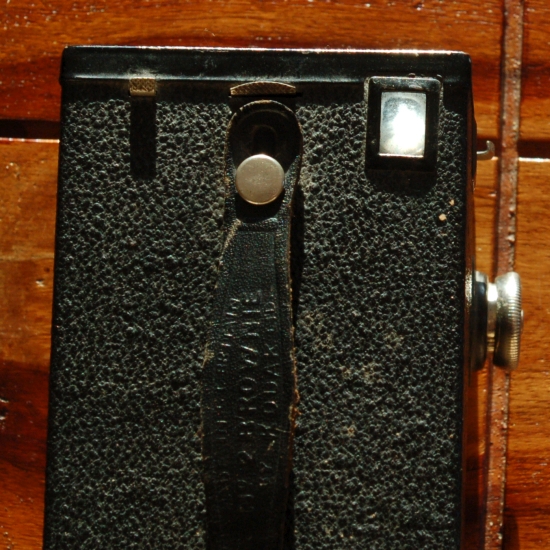
We can thank Kodak for the launch of consumer photography with the brownie series. It was a shrewd marketing ploy for George Eastman’s Company. Make a simple cheap reliable camera and folk will buy it and come back for your film. The first Brownie was made in 1900 but a year later the No.2 was launched. Of the box brownies this was the most successful and gave us 120 film. With over 2 million made over 34 years these are widely available and very robust if one of the later aluminium ones (1924 on). The fixed focus simple meniscus lens is covered except when taking a shot and this actually has the most manual controls of any camera in this post with a choice of 3 apertures and a bulb shutter option but not much else.
The box brownies meant Kodak set the tone for P&S for the first third of the century.
1939 – Bulldog Spirit -Ensign Ful-Vue
From the 1930’s on more serious photographers could be found clutching cameras with twin lens reflex (TLR) focusing. But for the more snapshot orientated more simplistic cameras that resembled TLR but the viewfinder lens was fixed and not geared to the actual lens and had simpler features. Here I’m focusing on a Very British camera the Ensign Ful-Vue. The first model dated from 1939 and although it is a pseudo TLR it looks very metal box camera like.

It featured a massive brilliant waist level viewfinder. The focus and aperture are fixed and the camera offered a 1/30 or timed (i.e. bulb mode). The camera has a close up mode done by pulling the lens out.
But by the end of WWII there was a need for a break from austerity and the camera was redesigned into the 1946 classic Barnet-Ensign Ful-Vue, essentially the same camera but with a more curvy appearance (bit miner helmet). This was followed by the 1950 Ful-Vue II which featured that stable of the P&S – zone focus.

All of these used Kodak’s 120 format film (unlike the last Ful-Vue super which used 620). However 120 film cameras for the P&S crowd would gradually wane over the coming decades due to the smaller 35mm single use film cartridge which became more & more ubiquitous and allowed for increasingly smaller cameras
1958 – P&S Prototype – Fujica 35 Automagic
Small isn’t exactly Automagic‘s forté compared to later 35mm compacts. However this camera from the 1950’s has all the rudimentary features that appear in more famous P&S from the 60’s and 70’s golden age like the Olympus Trip 35.
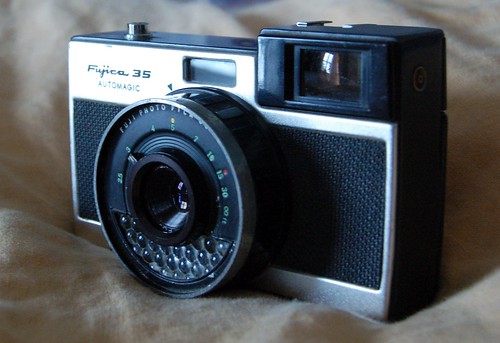
As well as a Fujica glass scale focused lens, the camera is one of the first P&S with automatic exposure. The shutter speed is fixed but the camera’s half cyclops selenium meter controls the aperture blades directly. You could adjust for common consumer film speeds of the day (up to 200 ISO) and you could knock out of automatic mode for flash photography.
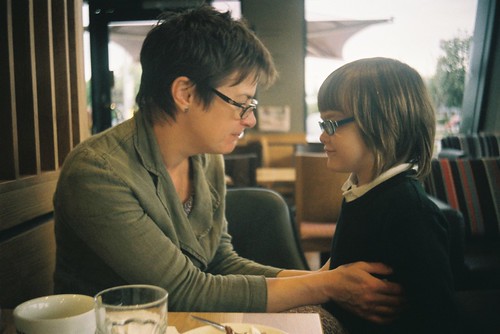
A quirky, bit bulky camera to use today with an odd focus control but gives a lovely retro image and was a shape of things to come.
1961 – Small But Mighty – Olympus PEN EE
Over at Olympus the concept of a compact 35mm P&S was well under way. The PEN family of half frame 35mm compacts and SLRs began in 1959.
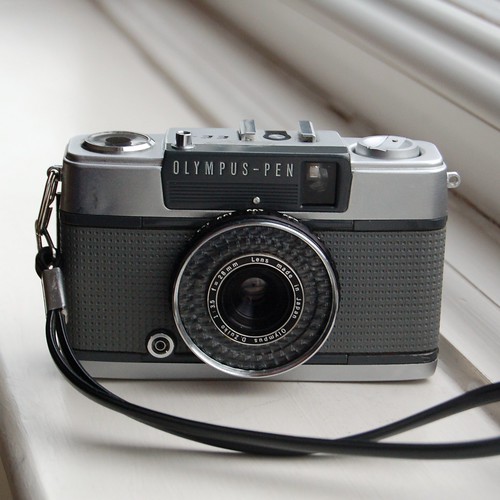
The P&S versions the E series followed in 1961 with the PEN EE. This fixed focus tiny bundle of joy was stylistic and technological marvel. When first launched it was fixed shutter speed but then tweaked to 2 speed controlled along with the aperture by automatic exposure. The later (1968) EE-2 which I own essentially has the same metering system as its full frame brother the Olympus Trip 35 abet with a slower lens due to fixed focus nature. You couldn’t get much more classic P&S than these cameras and they come with excellent optics as well as gorgeous looks. The EES and EES-2 added zone focus and slightly faster lenses (essentially the half frame trip
1960’s -Plastic-tastic – The Diana
Although the tide was swinging toward 35mm and smaller formats for P&S the 60’s still saw a range of models launched like the Agfa Isoly series. Those models had an influence in Hong Kong on the Diana and its many clones.
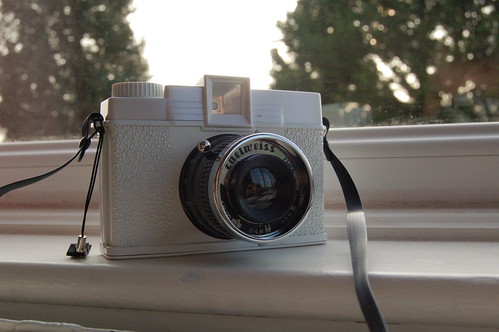
Whilst Agfa produced a range of Isolys with often good optics what you got with the Diana was a plastic lensed basic camera. It was given away as a promotional item, prizes at fairs as well as being available for next to nought mail order through the 60’s and into the 70’s when the 35mm so called ‘trashcams’s started to appear But the Diana has gone on to have a second life. The Lo-fi camera movements like Lomography and the art world has embraced this poorly made beast with distorted images and a tendancy to light leaks. So much so that Lomographae AG started making a modern Diana with the Plus then the F+
1975 – Flash Harry – Konica C35EF

Bit of a no brainer here. The C35EFwas the first 35mm compact with built in flash. It also benefited from excellent hexanon optics and this was one of Andy Warhol’s favourite Cameras Zone focus with full automatic metering this was basically a Konica C35V with simpler exposure and a flash bolted on the side. It would lead to a series of compact flash units from Konica including the popular fixed focus POP and the worlds first AF production camera the C35 AF in 1977.
1984 – Little Brother is Watching – the LC-A
Although AF arrived in ’77 for compact cameras there was still an appetite for high end zone focus P&S (probably due to the cost and infancy of AF). Models like the XA2 and Cosina CX series illustrate just how compact a non AF P&S could get.
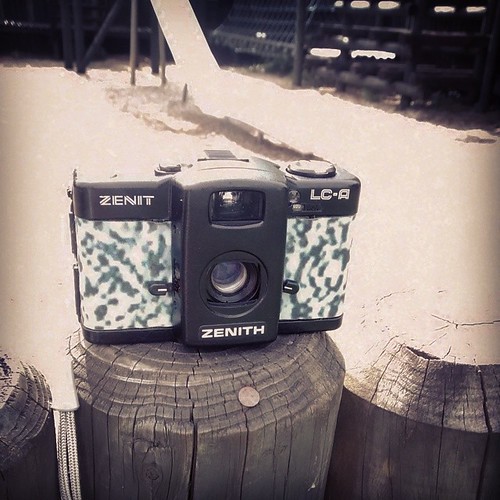
The LC-A is a cheap clone of the Cosina was produced in Russia but thanks to some enterprising Austrian students that Camera has outlived its contemporaries and is still made today abet in China. The Lomo LC-A is a compact zone focus camera and is a true marmite camera. But even its haters can’t deny its cultural impact and a production run that is starting to creep up on the Brownie No 2. For me a weirdly paradoxical camera – with colour film a lomography classic with colour shift and oddness. But stick in B&W…
1987 – Full auto – Nikon F-401 (N4004)
So we finally reach an AF P&S but not the groundbreaking Konica C35 AF or any compact that came after. What we have herein the f-401 is an SLR (bear with me please)

This not the first AF SLR by some margin nor even Nikon’s but it is oddly an important camera. Firstly I include it as a P&S as arguably that’s what most shots on it would have been taken in Full AF and auto exposure mode making it on one level no different from any AF compact. Secondly it was intended as a shooter for the consumer not the pro or prosumer. Thirdly it can use with any Nikon Lens F-mount lens from the the late 70’s AI on right up to new DX lens for digital cameras (okay you wouldn’t want to as they vignette but you can !!). The first TTL built in flash AF the Pentax SFX can do much the same but with Pentax lens but won’t AF with many lenses made later. Of course it is more than a P&S but I suspect many a shot was taken on it with the stock lens and with fully auto settings
1996 -Shape of things to Come – Canon Ixus
APS film arrived in 1996 just when digital cameras were starting to get going. It was marketed as a modern easy load film with some advantages to the casual user over 35mm including 3 frame mask sizes that could be switched in at any point. Whilst others made quite bonkers cameras for it including SLR models, Canon quickly realised it was best suited to ultra compact 35mm models. Their IXUS (ELPH in US) series was ultra compact but with pretty high end models.

Ultra compact and with the high end models pretty cutting edge these were arguable the pinnacle of film technology and unfortunately demonstrate why everything was in place for the digital revolution bar the sensor. Canon also made more basic models in the series but adhering to core design (I own a non zoom M-1 which was pretty much the most basic camera they did)
APS died as a film format in production in 2011 (the last APS IXUS was released in 2002). It oddly lives on a a set of Digital sensor sizes (most Digital and CSC cameras have a sensor the size of an APS format and the IXUS name lives on as a compact digital camera series.
